Rina Ayuyang faces the music
Posted: Tuesday, August 20, 2002
By: Darren Schroeder
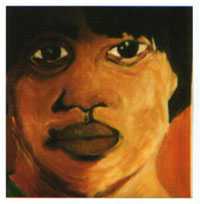
Rina's comic Namby Pamby made a very big impression on me when I reviewed it recently. The comic is full of things that make you think and much to appreciate. I figured Rina might make for a thoughtful and interesting subject for an interview, and I wasn't wrong....
Darren Schroeder: What is your full name?
Rina Quilala Ayuyang.
DS: Is Rina a boys or a girls name?
RA: Umm... it's a girls name, I hope.
DS: Age?
RA: 25, going on 26.
DS: Favourite Cartoon Character?
RA: I have so many cartoon favorites, but I think the coolest one has to be Bugs Bunny. He was so witty and could sing Cole Porter and Gershwin tunes. I have to say that a lot of the smart-aleck and sarcastic behaviour that I have now stems from watching Bugs Bunny cartoons.
DS: Were comics a big part of your childhood or did you discover them at a later stage?
RA: Comics had a HUGE impact on me when I was a kid. I became an avid admirer of newspaper comic strips like Blondie, Snoopy, Family Circus, mostly for their drawing styles, and later Doonesbury, for its political commentary. I also loved Mad magazine. I was introduced to action comic books by my brother and his small collection of Marvel and DC comics. I read and re-read Captain America and the Batman Vs. Aquaman issues. ( I have no idea which issue #'s those were) I loved their expressive illustrations and the melodramatic storylines. I also got interested in comics from the Philippines. I didn't know Tagalog, so my grandmother translated the dialogue for me. But the very first comic book that I bought for myself was Bugs Bunny. I was very interested in cartoons and animation, watching Merrie Melodies and Looney Tunes every morning after Bullwinkle. I spent so many hours watching a variety of cartoons (from Underdog to G.I. Joe) everyday up until the middle part of high school. I still watch, from time to time. It was only just recently that I discovered alternative comic artists like Chester Brown, Daniel Clowes, James Kochalka, Jessica Abel, Chris Ware, Jordan Crane and Adrian Tomine. They all inspired me to create my first mini-comic.
DS: How did you discover them?
RA: Well, unfortunately as years went by, many of the newspaper comic strips weren't holding my interest. I guess there's only so much light-heartedness you can take, especially during the bitter, dark, teenage years of one's life. So, I went to my local library one day when I still lived in Pittsburgh, PA and found a copy of Raw. Little did I know that there was another genre of comics out there that didn't have to be zany or action-packed, but still could inspire and entertain. It changed my whole perception of what comics were and what art was. MANY years later, a very funny and talented writer named Ken McCarty (who also happens to be my boyfriend), introduced me to books by Dan Clowes and Chester Brown. Seeing their work inspired me to read up on other comic book artists like John Porcellino, Jason, and all the others I mentioned before. Needless to say, I missed out on buying their mini-comics when they were originally published, but thankfully, I was able to pick up their collective works at my local comic bookstores and independent bookstores.
DS: What range of styles and subject matter appear in Philippine comics?
RA: There wasn't a specifically different kind of style with Filipino comics as compared to the American comics, at least in the ones that I read. The kind of Filipino comics that I was introduced to were usually included in Filipino pop magazines. For the most part, they were your average soap opera serials, but with a more melodramatic tone and sometimes more, shall I say, uninhibited.
DS: Would you describe your own comics as uninhibited?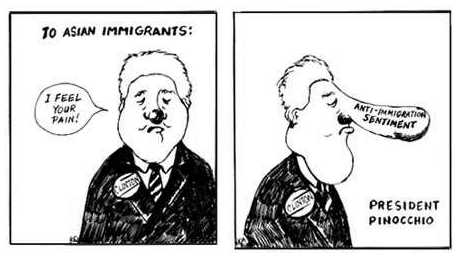 RA: All I know is that my comics are a reflection of my personality. I don't know if you would call that uninhibited or not. In the very least, I can tell you that they aren't scandalous.
RA: All I know is that my comics are a reflection of my personality. I don't know if you would call that uninhibited or not. In the very least, I can tell you that they aren't scandalous.
DS: Was art a big part of your education?
RA: Yes, it sure was. I focused on art in high school and went on to study Art and Conceptual Design at the San Francisco State University in California. I have been interested in art ever since I was a kid. My sister, being a great artist in her own right, introduced me to painting and drawing. In grade school, I would enter art competitions. I think the first time I won anything was for the VFW Flag Day Poster contest. I won a U.S. Silver Dollar. Eventually, I would stop entering art contests altogether, because I hated the pressures of competition. So I would just draw and design program covers or posters for school events, or draw or paint things for friends.
DS: Are those U.S. Silver Dollar actually only worth a dollar?
RA: Did I say Silver Dollar? Actually I meant to say a Susan B. Anthony Dollar! Sorry Darren. But on the subject of Silver Dollars...Those babies are pretty damn deceiving because they do say ONE DOLLAR on 'em, but I believe they are actually worth the same as silver of the same size. As for the Susan B. Anthony dollar...it's really worth a dollar. Although, many storeowners hate it when you pay with Susan B. Anthony dollars over here. I mean, you go up to the cash register, whip out one of those dollar coins, and the cashier cringes. And people hate buying stamps at the vending machines because they spew out dollar coins as change. I dunno, I myself would love to see us using dollar coins more often. They're fun.
DS: We have them here in New Zealand. People were a bit worried when we first changed from dollar notes, and there were lots of weird plastic coin holders on the market for a while. We seem to get by okay with the coins now, even without the plastic coin holders. Can't say they are fun, but they do look good, being a gold color. Roleplayers like filling little leather pouches with them and pretending they are real gold.
RA: Wow, do you see more people carrying those metal coin changers, you know the ones that you can attach to your belt?
DS: No, only taxi drivers. Back to your education, was comic creating/publishing a topic covered in the Art and Conceptual Design courses?
RA: Unfortunately not, at least not when I was there. Although, the university does have a great Animation program. The program focuses on more traditional animation processes and tools. The program did form what was called the San Francisco State Animation Society. As a member, I got to see Chuck Jones in person (from afar, however).
DS: What was the first comic you published yourself and how did that come about?
RA: My first published work was a political cartoon for my high school newspaper. My friend was doing a piece on then President Bush's (Sr.) stance on the environment, and she wanted me to do a cartoon to accompany it. The cartoon had Bush in a canoe up at his home in Kennebunkport (Maine), fishing in oil-polluted waters. After that I did some political cartoons for a newsletter run by API-Force, an Asian American, Pacific Islander political activist group based in San Francisco.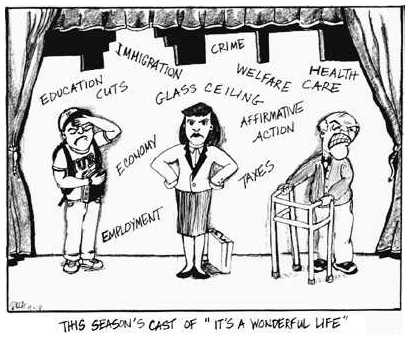 DS: Did you enjoy doing that sort of stuff?
DS: Did you enjoy doing that sort of stuff?
RA: It's always a great experience to work with a group that strives to educate and empower a community of people. That was what API-Force was all about. It brought awareness of the social and political issues that strongly affect many Asian/Pacific-Island Americans such as Immigration, Affirmative Action, and Discrimination. Just to be able to express that same mission and to create that type of social and political impact through comics was amazing. It gave me a greater understanding of what comics could do.
DS: Do you think comic creators at the moment are making the most of this?
RA: Oh, definitely. Comic creators are doing so many innovative and exciting things. You see it in the presentation of Chris Ware's Acme Novelty Library. You see it in Brian Ralph's quiet narratives. You have John Porcellino creating stories like wonderful haikus. You also see it in the many comic artists who document historical people, events, and places like Chester Brown's Louis Riel, Ho Che Anderson's King, or Jason Lutes' Berlin series. You see political and social commentary in comics by Tom Hart, Tom Tomorrow, Ted Rall. There's so many great artists and great works right now that have social, cultural, political and artistic significance. They are stretching the boundaries and certainly redefining comics. It is definitely not just the funny papers anymore.
DS: How do you distribute your comics?
RA: I distribute my comics, right now, entirely on my own, filling out orders by mail as well as taking copies to various comic book stores around the Bay Area that are willing to sell them. The Comic Relief store in Berkeley, CA is really supportive of small press comic book creators.
DS: Do you hang out with any other small press creators?
RA: I don't know about hanging out, but I do try to make it to comic conventions, exhibitions, and zine events. For the most part, I keep in touch with many small press creators through the good old postal service, and learn about other artists through the wonderful world wide web, and especially through Silver Bullet Comics.
DS: What materials and equipment do you use when drawing your comics?
RA: I use a variety of tools. I primarily use steel-nib dip pens, brushes for gray washes, and micron pens for the tiny details. I have a notebook full of ideas, drawings, photos, and scripts, a sketchbook for the doodles, and then Bristol board for the final versions. I am also experimenting with various screen tones. From time to time, I turn on my MAC and use Quark for layout ideas and Photoshop for retouching or re sizing.
DS: Who do you see as the target audience for your work?
RA: I don't really see my work targeting a specific age group. My stories try to share anecdotes and even life-lessons from every-day, ordinary occurrences. I'd like my work to go out to people who are interested in funny and true-to-life stories that they can relate to.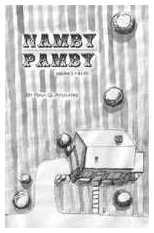 DS: Where did the idea for the talking honey jar come from in Namby Pamby #1?
DS: Where did the idea for the talking honey jar come from in Namby Pamby #1?
RA: Darren, that actually really happened! No, it came to me one morning when I was in a coffee shop with my sister and we were talking about our lives, our goals, and all those things you find yourself talking about as you get older. And as I usually do, I ordered a cup of tea with my breakfast. So when the waitress came back with my tea, she handed me one of those honey-jars shaped like a bear... And the rest is history, I guess.
DS: Describe the perfect cup of tea for you.
RA: It's Darjeeling steeped in hot, hot water. Add some milk and loads of sugar (I have a sweet tooth). And....that's it! Nothing complicated about it. Sounds good, huh?
DS: I like camomile tea myself, anything else I take black with two sugars to make it drinkable.
RA: Yeah, camomile is one my favorite herb teas. But I prefer black teas and white teas. Thai tea is to die for too!
DS: Why call your comic Namby Pamby?
RA: I knew that the stories I was going to tell in my comic book wouldn't be attractive or interesting to everyone. I mean not everyone is interested in stories about the life of a Filipino American woman or about growing up in Pittsburgh, Pennsylvania. I was willing to accept that. So I wanted to call it something that would warn people, Okay, look out. This book is just about your every-day, ordinary events. No brawny guys in tights here! So I called it Namby Pamby because that's basically what the stories are: sentimental, commonplace, and perhaps banal. But the point is that it's usually those ordinary moments, that become the most memorable ones: whether it's the uncomfortable experiences at a supermarket check-out line or just looking out the window and onto your front lawn, Maybe there's a lesson to be learned from them or at least some response or emotion that can arise from them.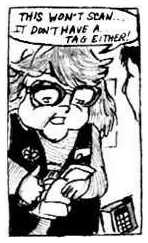 DS: Some people criticize the ordinary moments in autobiographical comics as being two self involved. Do you think they have a point?
DS: Some people criticize the ordinary moments in autobiographical comics as being two self involved. Do you think they have a point?
RA: Yes, I think they have a point. I am one of those critics, myself, but I think the goal to making such comics work is...connection; to have a connection with the reader, to write about your experiences whether ordinary or outrageous that people CAN relate to; to make a conscious effort NOT to be too self-absorbed in documenting all your experiences otherwise the reader will get sick of it after a while or just won't get it at all. I mean, you can't have it be one of those Oh, you had to be there types of stories. The storytelling has to build a relationship between the artist and the reader. Obtaining THAT and writing/drawing about ordinary moments is difficult because the mood or tone in which you present them has to be just right. Not a lot of comic artists can do that. I myself, am still learning.
DS: Aside from your own work, what's the happing local comic in San Francisco at the moment?
RA: There are so many comic creators in San Francisco and the Bay Area doing awesome work today that are way, way beyond my league. There's Dan Clowes, of course, with Eightball, Adrian Tomine with Optic Nerve, Steve Weissman's Tykes, Dan Perkins (also known as Tom Tomorrow) who does the awesome This Modern World strips. And also I have a soft spot for Otto Seibold's work, primarily children's books, most notably Olive. But there are so many like me who are putting out their own small press comics and zines in this town. We have a very passionate and supportive community of comic artists and small press creators over here. So... I advise anyone to come to this part of California and check out the cool things we are coming up with!
DS: I'll see if the SBC staff development budget can cope with that, but as I doubt we even have such a budget I don't like my chances.
RA: Well, did I mention that Californians love stamps from New Zealand? You can always get our books via post too!!!! Don't deprive yourself!
DS: If a film was made of your life, who would you want to do the soundtrack?
RA: I really love music, so this is a lovely question! Let's see. George Gershwin and Cole Porter standards for the beginning and end credits, Bjork for all the in-between, maybe a special song from Belle & Sebastian, and Underworld for the chase sequences. And if it turned out to be a musical picture, I would pick Stephen Sondheim.
DS: What work have you been doing recently?
RA: Right now, I am working on Namby-Pamby, Vol.1 #2. Due out in mid-September. Hopefully, it's as good as the first, if not better.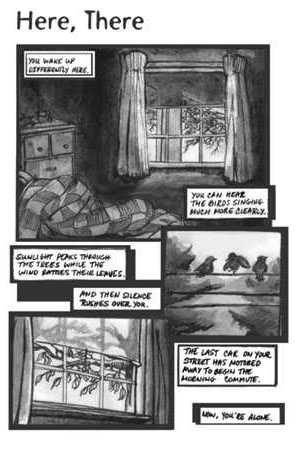 DS: Are comic fun or a job for you?
DS: Are comic fun or a job for you?
RA: For the most part, they're fun. Coming up with my own stories, drawing the way I want to, and sharing my work with others is great FUN. But like any other project, it takes a lot of hard work and dedication. One can get very intimidated and unmotivated just by the sheer enormity of the creative process, not to mention the willingness to devote time and money to promotion and sales (especially true for small press comic creators.) But in the end, I find it very rewarding to be able to come up with my very own creation and am overjoyed that people are actually interested in it. It's all worth it in the end.
DS: Any tips for the rest of us who can't seem to figure out the promotion and sales part?
RA: Well, I am still learning how to figure it all out myself too, being new to the whole business. All I can say is: Stay passionate about what you want to create. Don't second-guess yourself. Know that just having the opportunity to create something that you can call your own is reason enough to want to invest time and money for it.
DS: What makes for a good comic convention?
My ideal comic convention would be an event that was less focused on the selling of comics and more on the educational aspects of comics: learning new skills and processes through workshops and exhibits, hearing about new comic artists, forums about the comics scene. It would be really great if comic pros and emerging comic artists' booths were mixed together and not in separate wings of the convention center. It would also be cool if both comic pros and newbies could sit down and talk to each other about the comics world, each others' work, exchange ideas... just like a salon in Paris, but all these idealistic notions stem from my college days.
DS: What do you think drives that comic pros / emerging comic artists division?
RA: Well, it's probably because bigger publishing companies can afford to pay more for better booths, as opposed to self-published newcomers. See, I told you I was an idealist...booths mixed together?!? Geez, what nonsense!!!
DS: What do you think is the reason for the low numbers of female creators in the comic medium?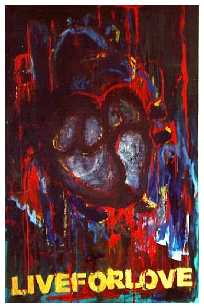 RA: Like all other mediums, there are a lot of talented women out there in the business, but they don't get the same amount of exposure. But I think that's starting to change slowly but surely in comics. Just this month, the Pond Gallery here in San Francisco had an exhibit of female comic artists as a part of LadyFest, a festival celebrating female artists, writers, and filmmakers.
RA: Like all other mediums, there are a lot of talented women out there in the business, but they don't get the same amount of exposure. But I think that's starting to change slowly but surely in comics. Just this month, the Pond Gallery here in San Francisco had an exhibit of female comic artists as a part of LadyFest, a festival celebrating female artists, writers, and filmmakers.
Comics have always been perceived as being male-centric or even misogynistic, so it's easy for women comic artists to get discouraged or intimidated. But I think the trick for any girl, woman, or lady who wants to be a comic artist or cartoonist, is to make it into something that they can call their own. Write about what you know and what you care about. There are many women comic artists out there to inspire you: Jessica Abel, Megan Kelso, Dame Darcy, Phoebe Gloeckner, Julie Doucet, Debbie Drechsler (who's also from the Bay Area), Lynn Johnston, Lynda Barry....the list definitely goes on...
And another thing, who says only men like Superheros or are the only ones who know about the gritty, tough world known as The Underground!!
Rina can be contacted via e-mail at rinaayuyangSTOP-@-SPAMearthlink.net
Or you can send mail to:
PO BOX 320054
San Francisco
CA 94132-0054
USA
Also check out her website at http://home.earthlink.net/~rinaayuyang
If you have a comment or question about Small Press then feel free to contact me